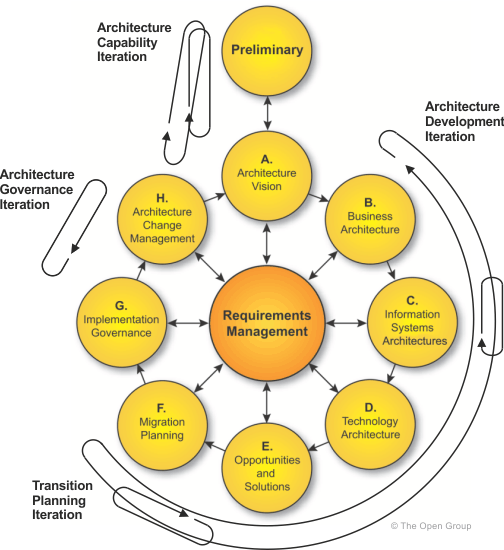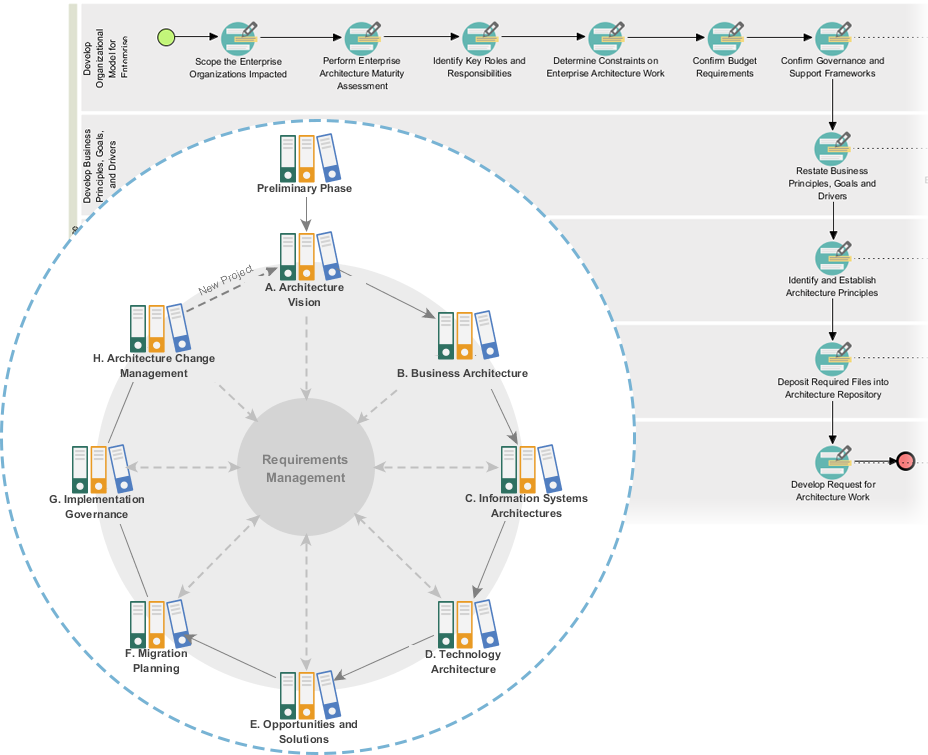Leveraging TOGAF for Effective Enterprise Architecture Development
Enterprise architecture (EA) is a critical component of modern organizations as it helps businesses align their technology investments with their strategic goals and objectives. However, developing an effective EA is a complex process that requires a structured approach, and that is where The Open Group Architecture Framework (TOGAF) comes in.
TOGAF provides a comprehensive framework for EA development, and it has been adopted by many organizations worldwide. In this article, we will explore how TOGAF can help organizations to develop an effective EA.
What is TOGAF and How Does it Work?
TOGAF is a comprehensive framework for enterprise architecture development, and it provides a structured approach for organizations to develop, maintain and evolve their EA. The framework is based on four key components: Architecture Development Method (ADM), Architecture Content Framework, Architecture Repository, and Architecture Governance.
-
The Architecture Development Method (ADM) is the core of TOGAF and it provides a step-by-step approach for developing and maintaining an EA. The ADM is divided into phases, and each phase has a specific objective and deliverable. This approach helps organizations to develop an EA in a structured and repeatable manner.

- The Architecture Content Framework provides a standard set of architecture artifacts, such as the architecture vision, the data architecture, and the security architecture, that organizations can use to develop their EA. This framework helps organizations to ensure that their EA is consistent and that it covers all aspects of the organization.
- The Architecture Repository is a centralized repository of EA artifacts, and it provides a single source of truth for the organization’s EA. The repository enables organizations to manage their EA artifacts, and it provides a historical record of the EA’s evolution over time.
- The Architecture Governance component provides a framework for the governance of EA, and it helps organizations to ensure that their EA is aligned with their business goals and objectives. The governance framework provides a set of processes and roles for managing the EA, and it helps organizations to ensure that their EA is effective and efficient.
Benefits of Using TOGAF
Using TOGAF provides a number of benefits to organizations, including:
- Improved Alignment with Business Goals: TOGAF provides a structured approach to EA development, and it helps organizations to align their technology investments with their business goals and objectives. This improved alignment leads to better decision-making and a more efficient use of resources.
- Improved Architecture Consistency: TOGAF provides a standard set of architecture artifacts, and it helps organizations to ensure that their EA is consistent and that it covers all aspects of the organization. This consistency leads to better communication and collaboration within the organization.
- Improved Architecture Management: TOGAF provides a framework for the management of EA, and it helps organizations to ensure that their EA is always aligned with their business goals and that their technology investments support these goals.
- Improved Architecture Governance: TOGAF provides a framework for architecture governance, and it helps organizations to ensure that their EA is effective and efficient. The governance framework provides a set of processes and roles for managing the EA, and it helps organizations to ensure that their EA is aligned with their business goals and objectives.
How to Adopt TOGAF
Adopting TOGAF is a step-by-step process that involves the following steps:
- Define your EA goals and objectives: It is important to clearly define your EA goals and objectives, as this will help you to determine how TOGAF can best support your organization.
- Assess your current architecture: Before adopting TOGAF, it is important to assess your current architecture and identify any areas that need improvement. This assessment will help you to determine how TOGAF can best support your organization.
- Create a project plan: Once you have assessed your current architecture and defined your goals and objectives, you need to create a project plan for adopting TOGAF. The project plan should include the resources required, the timeline for adoption, and the key stakeholders involved.
- Train your team: TOGAF is a comprehensive framework, and it is important that your team is trained on how to use it effectively. Training should include both technical and non-technical team members, as everyone needs to understand the purpose and benefits of TOGAF.
- Implement the framework: Once your team is trained, you can start implementing the TOGAF framework. Start with the Architecture Development Method (ADM), as this provides a step-by-step approach for developing and maintaining an EA.
- Continuously improve: TOGAF is a continuous improvement process, and it is important to continuously evaluate your EA and identify areas for improvement. This will help you to ensure that your EA remains effective and efficient over time.
Maximizing the Benefits of TOGAF ADM with Visual Paradigm
Implementing the ADM can be a complex and time-consuming process, and organizations often struggle to fully realize the benefits of TOGAF. This is where Visual Paradigm comes in, as it provides a comprehensive solution for supporting the TOGAF ADM.
Visual Paradigm is a leading EA tool that provides a comprehensive solution for modeling, visualizing, and managing EA. It supports multiple architecture frameworks, including TOGAF, and it provides a range of features to support the TOGAF ADM. Some of the key features of Visual Paradigm include:
- Step-by-step approach: Visual Paradigm provides a step-by-step approach for implementing the TOGAF ADM, making it easier for organizations to understand and follow the ADM process.
- Architecture modeling: Visual Paradigm provides a range of architecture modeling tools, including UML, BPMN, and ArchiMate, to help you model your EA.
- Architecture visualization: Visual Paradigm provides a range of visualization tools to help you view your EA, including diagrams, charts, and reports.
- Architecture management: Visual Paradigm provides a range of tools for managing your EA, including version control, change management, and impact analysis.
Conclusion
TOGAF is a comprehensive framework for enterprise architecture development, and it provides a structured approach for organizations to develop, maintain, and evolve their EA. Using TOGAF provides a number of benefits, including improved alignment with business goals, improved architecture consistency, improved architecture management, and improved architecture governance. Adopting TOGAF is a step-by-step process, and it is important to train your team, implement the framework, and continuously evaluate and improve your EA. With the help of TOGAF, organizations can ensure that their EA is effective and efficient and that it supports their business goals and objectives.


